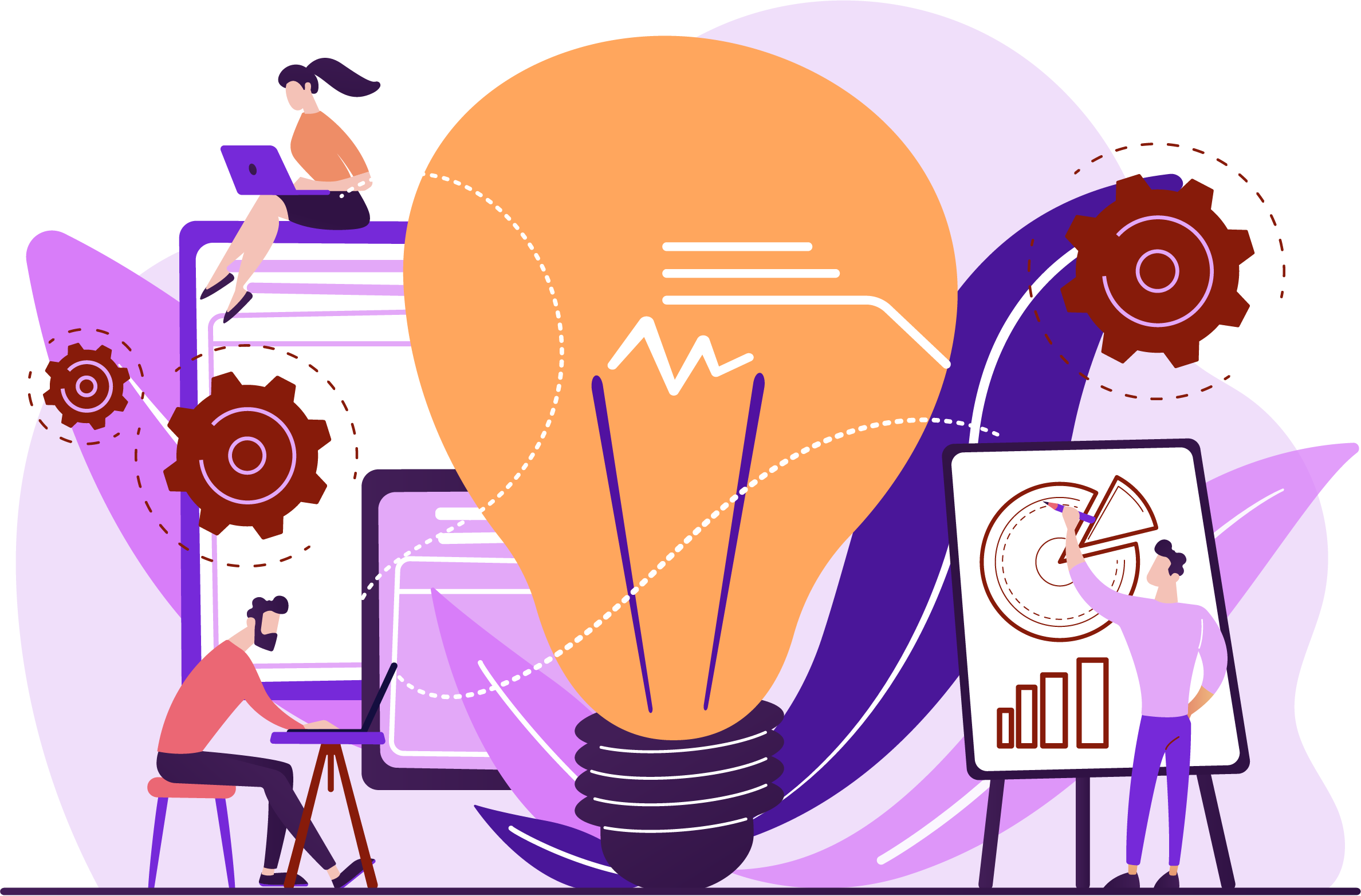Recruiters are more often than not put to the test of unearthing talents that not only garner the right set of skills required for a particular job but also have the behavioral and psychological aptitude to push the company towards success.
The fast-paced and cutthroat talent acquisition market has forced recruiters to think outside the box and involve a more intelligent approach to candidate matching.
Here is where talent intelligence comes in like a breath of fresh air.
Nearly 47 million working professionals willingly and quietly walked away from their jobs in 2021, which followed a strenuous struggle to find skilled talents for companies.
If we consider a more recent example of OpenAI, the hottest rage of the Silicon Valley, where nearly 730 of its 770 employees threatened to quit the company following the dismissal of CEO Sam Altman by the company board,
If this had happened, considering the current state of the US, which is at an all-time talent shortage, it would have been massively difficult for the recruiters for OpenAI to fill these positions promptly.
It’s evident that without a strong employee ecosystem, a company, no matter how impregnable, can come tumbling down.
So, recruiters have to stay on top of these challenges.
Understanding these challenges, this comprehensive blog explores the role of talent intelligence in recruitment and how talent intelligence platforms can boost your recruitment productivity.
What is Talent Intelligence?
Talent intelligence is an umbrella term used to describe the methods companies use to collect, monitor, and analyze internal and external talent data and HR trends to predict talent needs and make qualified talent acquisition decisions for enhanced company performance and employee satisfaction.
Yes, the skills and experience of an employee are always considered first, but nearly every time, it boils down to the intuition of the recruiters when making any hiring decisions.
It’s their gut feeling that makes them believe that an applicant is the right fit for the company. Intuitions are not always right.
So, any talent intelligence platform helps recruiters make informed decisions based on industry and company data.
This way, the probability of a good hire increases significantly.
Even though it is new, recruiters across the globe are quickly shifting to AI recruitment tools powered by talent intelligence to make informed hiring decisions.
What Makes Talent Intelligence So Lucrative For Recruiters?
HR managers and recruiters in 2024 have to revamp their talent acquisition strategy with creativity and data at the core of the process.
Incorporating talent intelligence solutions can improve recruitment productivity and deliver key talent insights, allowing recruiters to make good hiring decisions.
Talent intelligence also:
1. Brings about diversity in the recruiting process
Talent intelligence, facilitated by new-age software, enhances diversity in the recruitment process by providing insights into candidates' diverse skills, experiences, and potential.
The best talent intelligence software analyzes data to uncover hidden talents and highlight candidates from various backgrounds.
Subsequently, at the initial recruitment stages, several talent intelligence software can identify any potential issues with your job description that might hint towards a bias and help you fix them to make an inclusive JD.
By promoting an inclusive approach, talent intelligence software ensures fair assessments, reducing unconscious biases.
This strategic use of talent intelligence fosters a diverse and dynamic workforce, ultimately driving innovation and organisational success.
2. Reduces turnover rates drastically
High turnover rates can be caused by various factors, such as poor management, a lack of growth opportunities, or low employee morale.
By using a mix of talent intelligence and people analytics, companies can identify the root causes of high turnover rates and take steps to address them.
For instance, a company may use talent intelligence to analyse employee feedback and identify areas where improvements can be made.
If the feedback suggests that employees are unhappy with their compensation, the company can take steps to offer more competitive compensation packages.
Similarly, if the feedback suggests that employees are unhappy with their work-life balance, the company can take steps to improve it.
By addressing these pain points, companies can improve employee satisfaction and reduce turnover rates.
3. Keeps you ahead of changing HR trends
The global job market is undeniably unpredictable.
With war, recession, pandemics, and significant growth in AI technology, there is no saying what the future holds for recruiters.
In such a scenario, talent intelligence insights can help you stay ahead of trends by predicting company job needs, emerging job roles, and preparing data-driven strategies that will future-proof your recruitment process.
Further, as competition within companies to find and lock the perfect candidates gets tougher, it’s necessary for talent acquisition specialists, especially hiring for small and medium-sized companies, to shape company culture and business environment to make it more attractive for top talents to join the company.
The future is not employer-driven but employee-oriented, and recruiters need to adapt with insights and talent intelligence.
Talent Intelligence vs. People analytics: What’s The Confusion?
Talent intelligence and people analytics may sound similar, but they play different roles in the corporate environment.
Think of talent intelligence as your guide to understanding the talent landscape both inside and outside your company.
It's like a compass helping a global company plan expansion—providing talent insights of the local labour market, skilled professionals' availability, salary expectations, and competitor activity.
Now, people analytics shifts the focus inward. It's the tool you use when you notice high employee turnover.
Imagine a scenario where your organization is losing valuable team members.
People analytics steps in, analysing data on employee behaviour to pinpoint the reasons behind the turnover.
This could lead to adjustments like offering better compensation, creating more career growth opportunities, or enhancing the work environment to make it more appealing.
In simple terms, talent intelligence looks outward, examining the talent pool, while people analytics looks inward, figuring out how to enhance the employee experience. Both are vital for recruiters aiming to stay competitive in today's fast-paced business world.
Updating Talent Intelligence at the Initial Stages of the Recruiting Process
Data can be interpreted in varied ways, and with a vast influx of it coming your way when you have a talent intelligence partner in your recruitment process, it can help you at different stages of the initial recruiting cycle.
Candidate Sourcing:
Some of the best talent intelligence software can assist you in identifying the go-to channels for sourcing the kind of candidate you are actively seeking.
Platforms like Skima that employ AI and talent intelligence can also help you discover potential candidates from within your existing data.
Candidate Matching:
Unlike traditional parsers that often take a skill-based perspective to match candidates, talent or hiring intelligence considers numerous behavioural and psychological factors in addition to skills to narrow down the candidate pool.
Candidate Shortlisting:
Talent intelligence helps you understand market trends and compensation insights that your competitors are offering to assist you in shortlisting candidates that have a higher conversion rate, reducing your time to hire.
How Do You Get Started With Talent Intelligence?
It's important to optimally integrate talent intelligence into your recruiting workflow to maximize output.
As you go back to your flowchart, consider these aspects.
A. Understand the job role
It’s imperative to have a clear and informed approach to any single recruitment process.
This starts by comprehending the job role in its entirety.
Identify the hurdles that may come your way when finding talents in the set domain and write down the steps you need to take to overcome these hurdles.
List the types of data points you would like to track and select the KPIs (key performance indicators) that matter most to you, considering the specific job role.
B. Study market trends
Talent intelligence gives you access to a variety of HR market insights in numerous industries.
From a detailed rundown of your competitors work culture to learning why senior employees are driven towards a particular company, you get to know everything about what’s going on outside your office space and make key improvements to various aspects of the company to keep employees engaged and motivated to work in the company while enticing new employees to choose you.
C. Collect and integrate your data
Every recruiter has an HDD filled with resumes and CVs.
But, when a new job requirement comes in, the first step is not usually to go back to the data in hand but to start posting jobs on portals.
Talent intelligence tools like Skima mine your existing data to unearth top candidates, saving you a whole lot of time posting jobs and waiting for applications.
D. Monitor, analyse, and improve
Talent intelligence is a continuous process, and the more you explore it, the more you will find ways to improve your use of it.
You must assess performance, compare results, and judge your progress from time to time to assure your methods are relevant and up-to-date with recruiting trends.
When talent intelligence and people analytics combine, you can expect to scale your recruitment process seamlessly.
Enjoy a strategic approach to recruiting infused with modern AI talent intelligence platforms like Skima to enhance recruitment productivity and help you narrow down candidates quicker.



